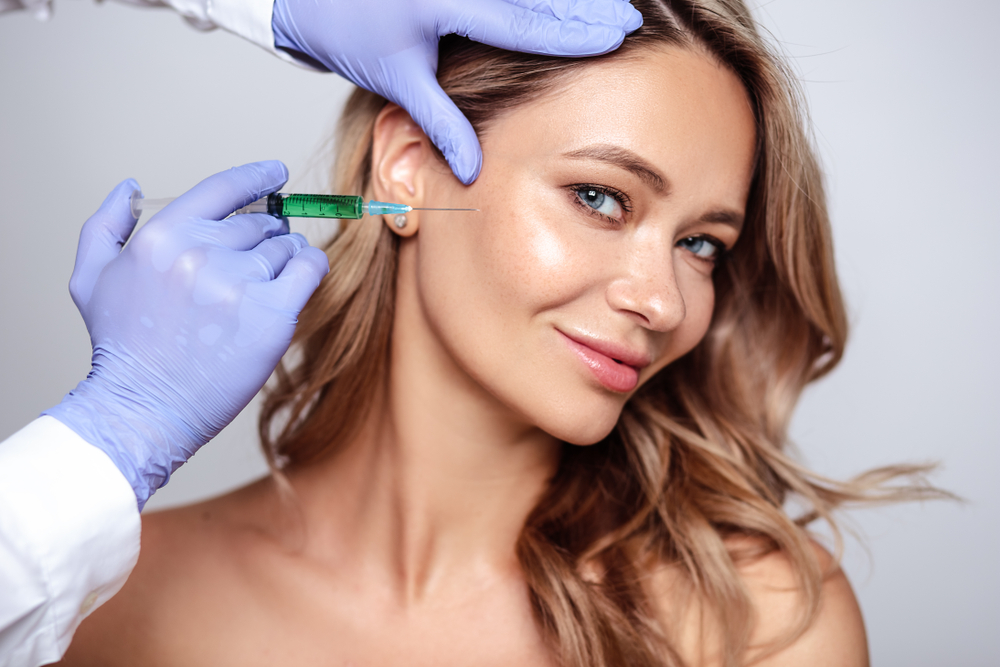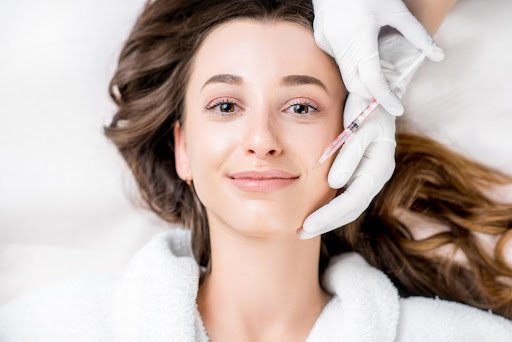In order to treat wrinkles and creases on the face, Botox is one of the approved drugs. Injectables like Juvederm and Botox are commonly used to fight the effects of aging. When BOTOX and Juvederm are used, aging signs are reduced because it makes an area appear chubbier and blends in with the surrounding skin. Professional injectors know exactly where not to inject Botox – and, more importantly, where it shouldn’t be injected:
The ‘Nefertiti lift’ is a procedure that uses BOTOX® to smooth the neck. There are two types of lines around the neck that can be relaxed using this treatment:
The neck naturally develops horizontal creases as we age. These lines can be reduced by injecting small amounts of Botulinum Toxin above and below the wrinkles – this could be all the way around the neck. BOTOX® is sometimes called a ‘necklace’ by practitioners. Injectables and dermal fillers, such as Juvéderm, can be used to treat these types of lines.
The vertical protrusions on the neck of some people are particularly noticeable when they speak, especially those who exercise a lot. These bands are caused by the platysma muscles. By eating, straining, and generally gripping your jaw, they strengthen and grow. People can see the muscles more clearly when they smile as they extend from the top of the chest to the lower jawline. It is sometimes referred to as a ‘turkey neck’ when the platysma muscles sag
Where Not to Inject Botox: Botox Injection Mistakes
A properly trained medical professional should inject botulinum toxin to reduce the risk of both minor side effects and potentially serious complications.

- A “Mephisto Effect” or “Spock brows” can result from injecting the frontalis muscles instead of the corrugator supercilii muscle (smaller muscles around the eyebrows).
- When treating crow’s feet, the orbicularis oculi muscle is injected into the wrong area.
- Kimberly’s temporary facial asymmetries were caused by over-dilution of Botox injections in the lower facial muscles.
- When bruxism and mandibular hypertrophy patients are treated with Botox, the muscles under the chin are injected instead of the nearby masseter muscle.
There is a possibility of Botox Fails
 Botox has few to no side effects for the vast majority of patients. However, some people work with poorly trained providers and end up getting more than they bargained for. Here are some real-world Botox failures:
Botox has few to no side effects for the vast majority of patients. However, some people work with poorly trained providers and end up getting more than they bargained for. Here are some real-world Botox failures:
Areas treated with Botox
Face uppermost:
- Those lines between the eyebrows that appear when you frown
- Lines on the forehead
- Bunny lines on the nose
The eyes are:
-
- A hooded eye or eyebrows
- A crow’s foot is a wrinkle around the eyes
- Tear troughs (under the eyes)
Face below the chin:
- Lines around the mouth caused by lipstick
- Dimpling of the chin can be prevented by Botox injections
- The jawline and neck
- An angle between the jaw and the mouth (teeth grinding – bruxism)
It is important for an injector to know where not to inject.
The area above the pupil near the orbital bone should never be injected by an experienced, qualified injector. If Botox is injected here, An upper eyelid droop can result from it drifting downward. This can last from weeks to even months.

Don’t hesitate to hire a physician who is both board-certified and experienced enough to know where to inject in order to improve your problematic areas if you decide to go forward with injectables. It’s important to understand that there are a lot more nuances to achieving excellent cosmetic results using Botox injections.
Incorrect omissions
- Injecting botulinum toxin into wrinkles
In this way, wrinkles are created that are unnatural. A relaxation of certain muscles with botulinum toxin causes adjacent muscles to become more active to compensate for the inactivity of the treated muscles. By causing wrinkles in other areas, botulinum toxin can help correct them. This action will create a desirable lifting effect, but it will also cause wrinkles in other areas.
- Unfamiliarity with muscle contraction patterns
There is an unnatural appearance caused by this lack of knowledge. Using Botulinum toxin as a treatment does not work when one size does not fit all. Each patient’s muscle contraction pattern determines the appropriate injection site. Thus, practitioners should be familiar with the patterns of contractions in the glabella, forehead, and crow’s feet. The information will enable them to deliver more natural results with less botulinum toxin by tailoring injection patterns for each patient.
- Having trouble distinguishing female and male eyebrows
Males can be given masculine appearances while females can be given feminine appearances due to this inability. Compared to women, men have straighter eyebrows that are closer to their upper eyelids. It is possible to shape eyebrows by relaxing the frontalis muscle or to lift the lateral portion of the brow by relaxing the superior-lateral fibres of the orbicularis oculi muscle. In order to lift the medial eyebrow portion, three depressor muscles should be injected with botulinum injections: the procerus, the corrugator supercilii, and the depressor supercilii.



